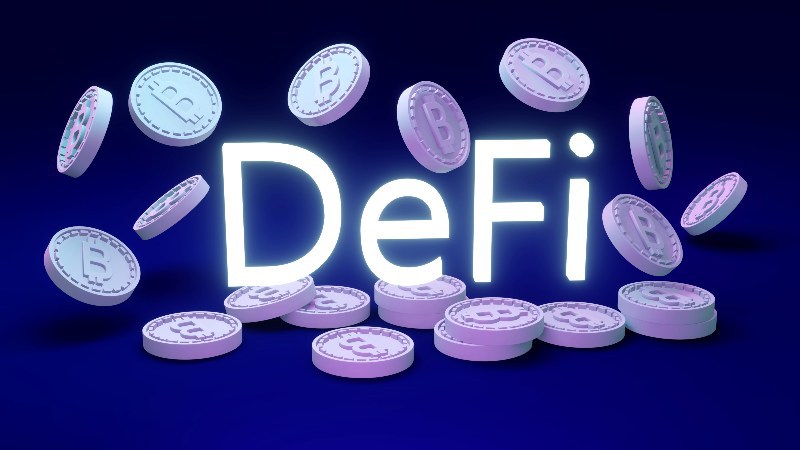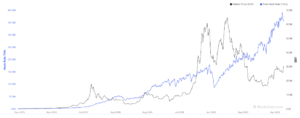Already founder of 2 companies dealing with financial education. (New digital finance s.r.l. and Koinsquare s.r.l.), Filippo Angeloni is also known for his work as an influencer on YouTube, where he has made more than 2.6 million views.
Filippo Angeloni has more than 5000 students and trainees, with 4500 hours of training carried out.
With such a background, we decided to interview him to understand his perspective on the latest trends in the crypto world, including NFTs and DeFi.
Interview with Filippo Angeloni on crypto, DeFi and NFTs
What are your predictions for the crypto market by the end of the year and what are your long-term predictions?
I tend not to make short-term analyses, but always medium- to long-term ones. If I were to take a guess I would say that we will experience a period of high volatility between now and the end of the year. The future is by definition uncertain, and in particular the period we are currently in.
It is necessary to have a well-defined strategy in order to operate in this sector.
As far as the long term is concerned, I believe that Bitcoin will travel at prices far above the current ones, clearly experiencing ups and downs.
For me, Bitcoin will continue to stay, but with less dominance over time, a cyclical asset.
At least until the point when a Bitcoin standard is reached on a serious level.
Until then, there will always be a moment of euphoria and a moment of panic for Bitcoin. This cyclicality has always been dictated by the halving.
Altcoins tend to amplify Bitcoin’s volatility, but currently, they continue to depend heavily on Bitcoin’s performance.
As has already happened, for those who are here for the long haul, a lot of people will be retiring early at the next halving.

Do you think the DeFi bubble is over? What is its future?
No, I don’t think it’s over at all, we’re just at the beginning.
When I started talking about decentralized finance it had a TVL (Total Value Locked) of less than $100 million. Today we are up to $245 billion, according to Defi Llama.
Obviously, DEFI will have its ups and downs, and after such growth a break is healthy. But DEFI is here to stay.
So, what is decentralized finance?
It is a financial system that does not rely on intermediaries, where we can receive, send, hold value, exchange it, borrow, lend, provide liquidity. We can do everything that the traditional financial system allows us to do and/or that it does not allow some people to do, 24/7, without asking anyone’s permission.
Only yesterday I took out a loan in seconds without leaving any paperwork and without going through our devilish bureaucracy. How many days would it have taken me to do the same in the traditional market? Time is our most important asset.
How can this all end?
An initial idea of mine was that DeFi would re-shift heavily first to Ethereum, and then to Bitcoin. This was assuming that Ethereum managed to solve its scalability issue.
I’m not sure it’s going that way anymore.
At the moment I am thinking that we will arrive at maximum interoperability between blockchains. As a DeFi user, every day I realize that what we really need is more interoperability, to be able to exchange value in a decentralized way easily between multiple blockchains (even non-Ethereum compatible), via Routers and Bridges.
I am aware that something already exists but it needs to be tested and more liquidity is required. Yesterday I tried to transfer USDC from one blockchain to another but I was unable to do so due to lack of liquidity, and I assure you these were not colossal amounts.
What kind of analysis do you do when trading?
I prefer fundamental analysis, on-chain analysis (I use services like Glassnode a lot) and I try to be very careful with behavioural finance.
I am not a fan of technical analysis but I recognize that it can be one more tool at our disposal to evaluate price action. If I really have to use technical analysis I use a weekly or bi-weekly time-frame, and very basic indicators like ema 20/50/100/200, RSI, and Mayer multiple, not much else.
My trading of altcoins is always medium to long term. On Bitcoin I avoid trading, I see it more as a long, very long term investment.
I am however in favour of rebalancing within the crypto world. Rebalancing the portfolio allows taking profit in times of bullish excess and re-positioning well in times of bearish excess.
I am a contrarian investor and I can’t wait for a bear market to return. Contrary to what people think, that’s when the real money is made.
What do you think about NFTs? Another bubble?
Currently, NFTs are undoubtedly in a bubble phase. After a moment of my utmost scepticism on the issue, I have studied it thoroughly and I do believe that NFTs are here to stay. I am convinced that they are the future, but I am realistic: they will also have, as happens in life, ups and downs. At the moment some works are priced absurdly high, in my opinion, and I don’t think that is a fair price for the market.
I admit that NFTs, metaverse and gaming crypto are trends that have taken me by surprise.
Fortunately, thanks to my knowledge, I was able to invest in all these “sectors”. For NFTs we are launching Hype.art with Koinsquare, together with Daniele Sesta, a well-known figure in DEFI.
For metaverse and gaming, we are launching a game entirely financed by The sandbox on their platform and I found myself “having” to invest in the token of the sandbox, in the lands and also in Wonderhero, another project in the gaming sector. Knowledge in this field is important, if it were up to me these trends would have slipped through my fingers.
What is the relationship between the stock market, gold and the price of Bitcoin? Is there a relationship?
Currently, Bitcoin in finance is the holy grail when it comes to de-correlation.
In finance, a time frame of at least 3 years is used to calculate how correlated an asset is to another.
In a sufficiently long timeframe, Bitcoin still proves to be de-correlated to other assets.
In the short term however, especially from March 2020 onwards, the correlation with other assets including equities seems to be increasing significantly.
The continued infusion of liquidity into the markets is increasingly leading to the correlation of each asset class.
However, adding correlated assets to a portfolio can lower portfolio risk and sometimes increase portfolio performance.
It may seem paradoxical to some but adding an extremely volatile asset such as Bitcoin to a financial portfolio, up to a certain threshold, can lead to a reduction in overall volatility and can increase portfolio performance.
Is Bitcoin a store of value in your opinion?
Let’s ask ourselves what a store of value is.
A store of value is something that can be traded and will retain value over time.
This is a much-debated issue. People with my (traditional) financial background believe that Bitcoin is not a store of value (and neither is gold), precisely because of its volatility, especially in the short term.
In fact, it has already happened that in phases of market panic, even Bitcoin has seen its prices plummet.
In my opinion, today there is no short-term store of value, not even fiat currencies (they have not been a store of value for some time).
I believe we must begin to broaden our horizons and understand “store of value” as an asset that maintains value over time, in a reasonable time range.
Here the facts speak for themselves, it is enough to open a Bitcoin chart to remove any doubt.
So yes, I am one of those who believe that Bitcoin is a Store of Value, it has proven it from its inception until today.
Like gold, Bitcoin is a long-term store of value.
In the short term the price of Bitcoin, like gold, can fluctuate a lot, but in the long term, there is no doubt: the price of Bitcoin is bound to rise!
The post The future of crypto according to Filippo Angeloni appeared first on The Cryptonomist.



















